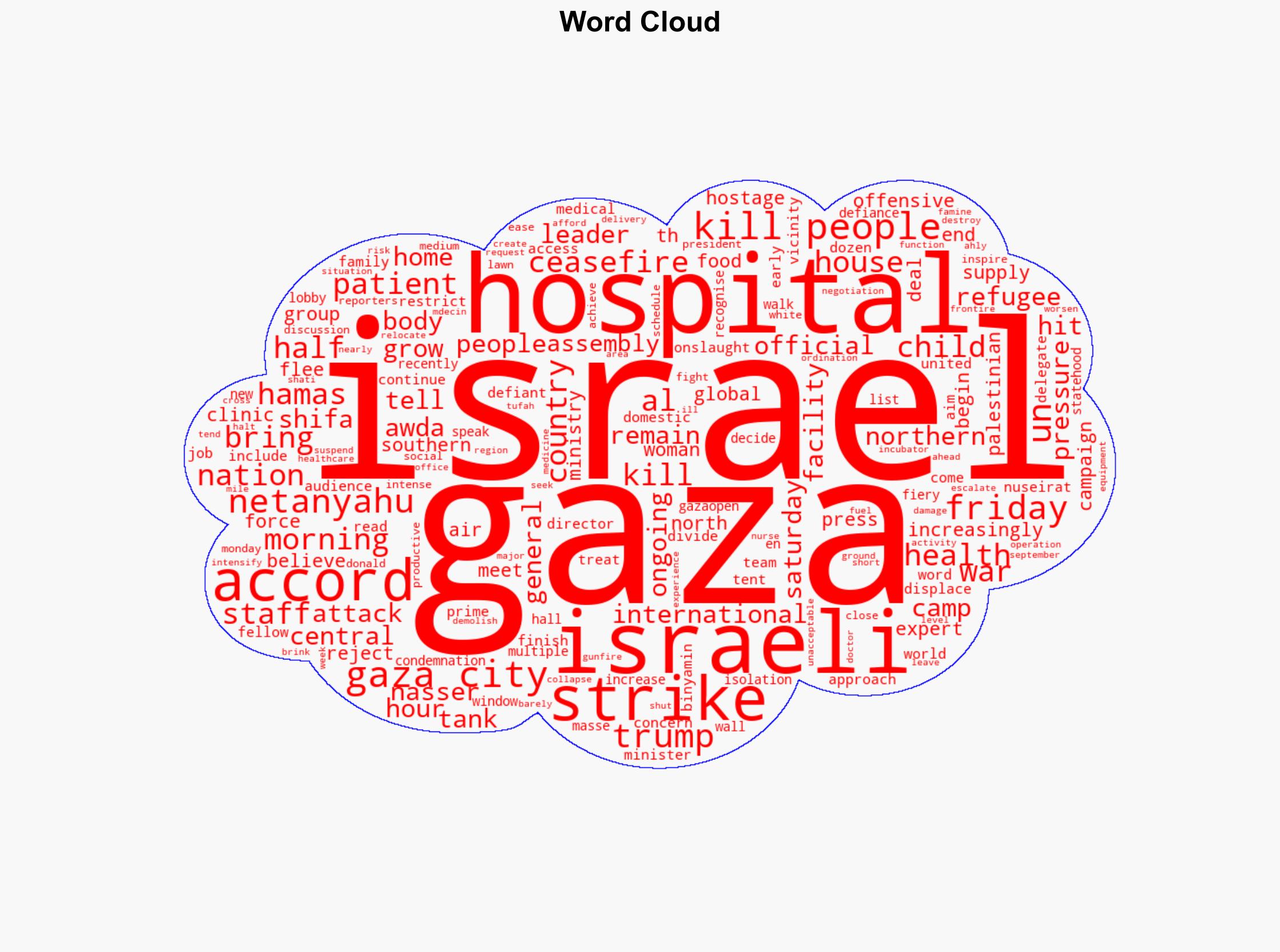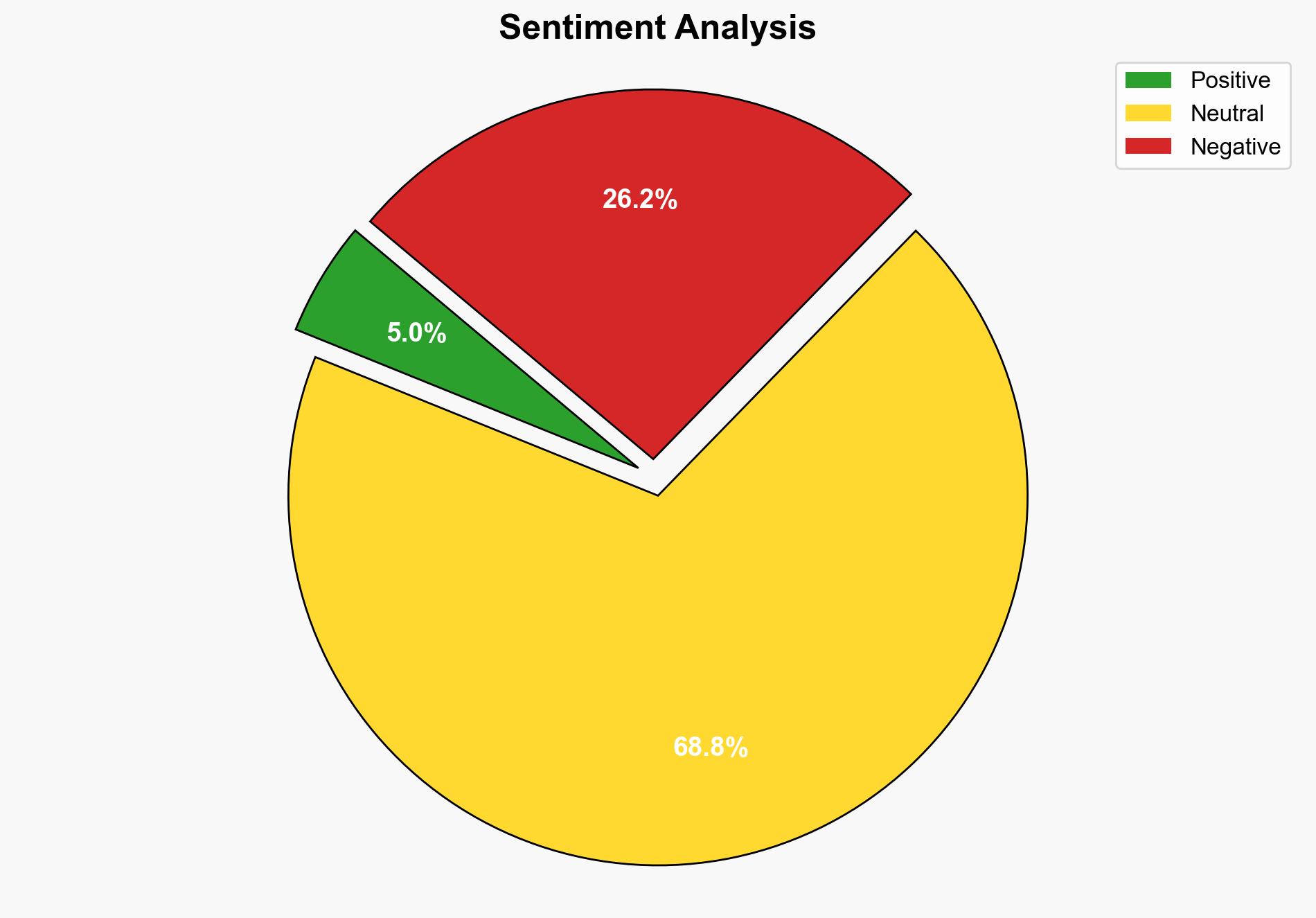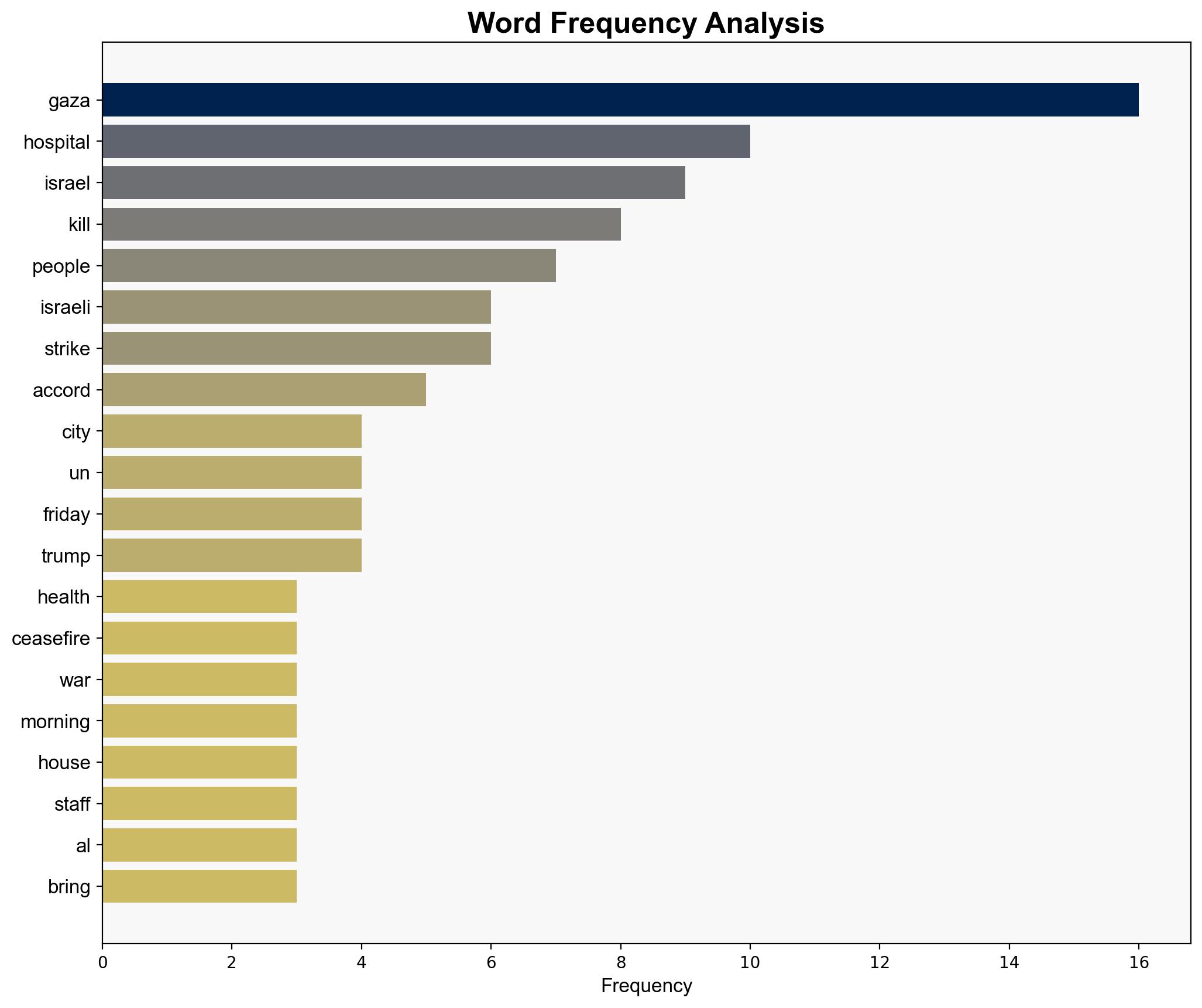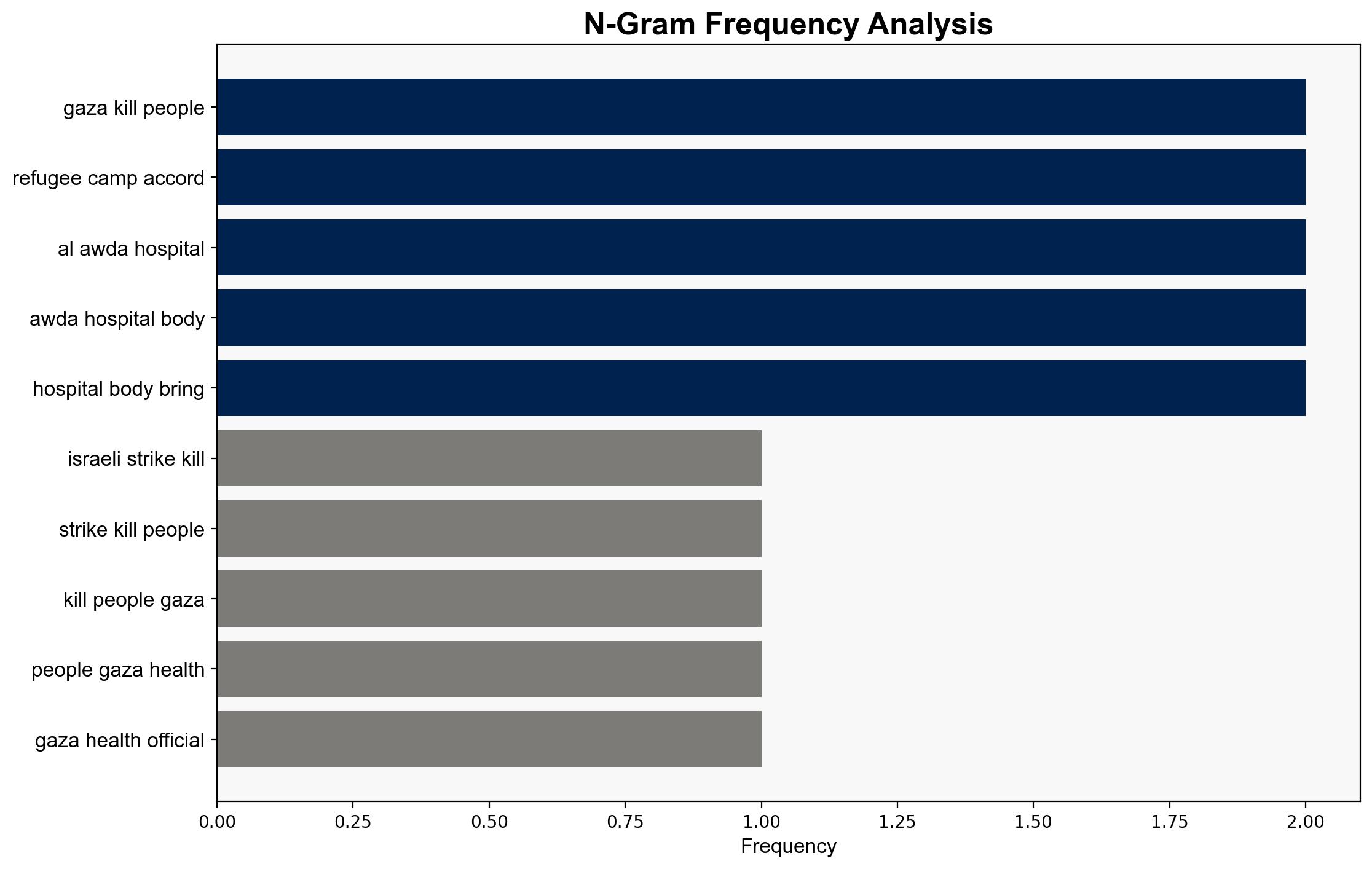Israel kills at least 32 people in latest strikes on Gaza – The Irish Times
Published on: 2025-09-27
Intelligence Report: Israel kills at least 32 people in latest strikes on Gaza – The Irish Times
1. BLUF (Bottom Line Up Front)
The most supported hypothesis is that Israel’s military actions are primarily aimed at dismantling Hamas’ infrastructure in Gaza, despite increasing international pressure for a ceasefire. Confidence in this assessment is moderate due to the complexity of geopolitical dynamics and the lack of transparent data. Recommended action includes diplomatic engagement to de-escalate tensions and humanitarian interventions to address the crisis.
2. Competing Hypotheses
1. **Hypothesis A**: Israel’s strikes are a strategic military effort to neutralize Hamas’ operational capabilities and secure national security, despite international condemnation.
2. **Hypothesis B**: The ongoing military operations are primarily politically motivated, aimed at reinforcing domestic political standing and demonstrating defiance against international pressure.
Using Analysis of Competing Hypotheses (ACH), Hypothesis A is better supported by the pattern of military actions and statements from Israeli leadership emphasizing security objectives. Hypothesis B, while plausible, lacks direct evidence linking military actions to purely political motivations.
3. Key Assumptions and Red Flags
– **Assumptions**: It is assumed that Israel’s military strategy is driven by security concerns rather than political motivations. Another assumption is that international pressure will continue to mount without immediate shifts in policy.
– **Red Flags**: The reliability of casualty figures and the distinction between civilian and combatant casualties are uncertain, as they are reported by entities with potential biases.
– **Blind Spots**: Limited visibility into internal Israeli decision-making processes and the potential influence of external actors like the United States.
4. Implications and Strategic Risks
The continuation of military operations poses significant risks of regional escalation, potentially drawing in neighboring countries and exacerbating humanitarian crises. Economic impacts include potential disruptions in regional trade and increased defense expenditures. Geopolitically, Israel risks further isolation, which could impact future diplomatic negotiations.
5. Recommendations and Outlook
- Engage in multilateral diplomatic efforts to broker a ceasefire and reduce tensions.
- Enhance humanitarian aid delivery mechanisms to mitigate the crisis in Gaza.
- Scenario Projections:
- Best Case: Successful ceasefire negotiations lead to de-escalation and resumption of peace talks.
- Worst Case: Escalation into broader regional conflict involving multiple state actors.
- Most Likely: Continued military operations with intermittent diplomatic interventions, leading to a protracted conflict.
6. Key Individuals and Entities
– Binyamin Netanyahu
– Donald Trump
– Hamas leadership
7. Thematic Tags
national security threats, counter-terrorism, regional focus, humanitarian crisis





